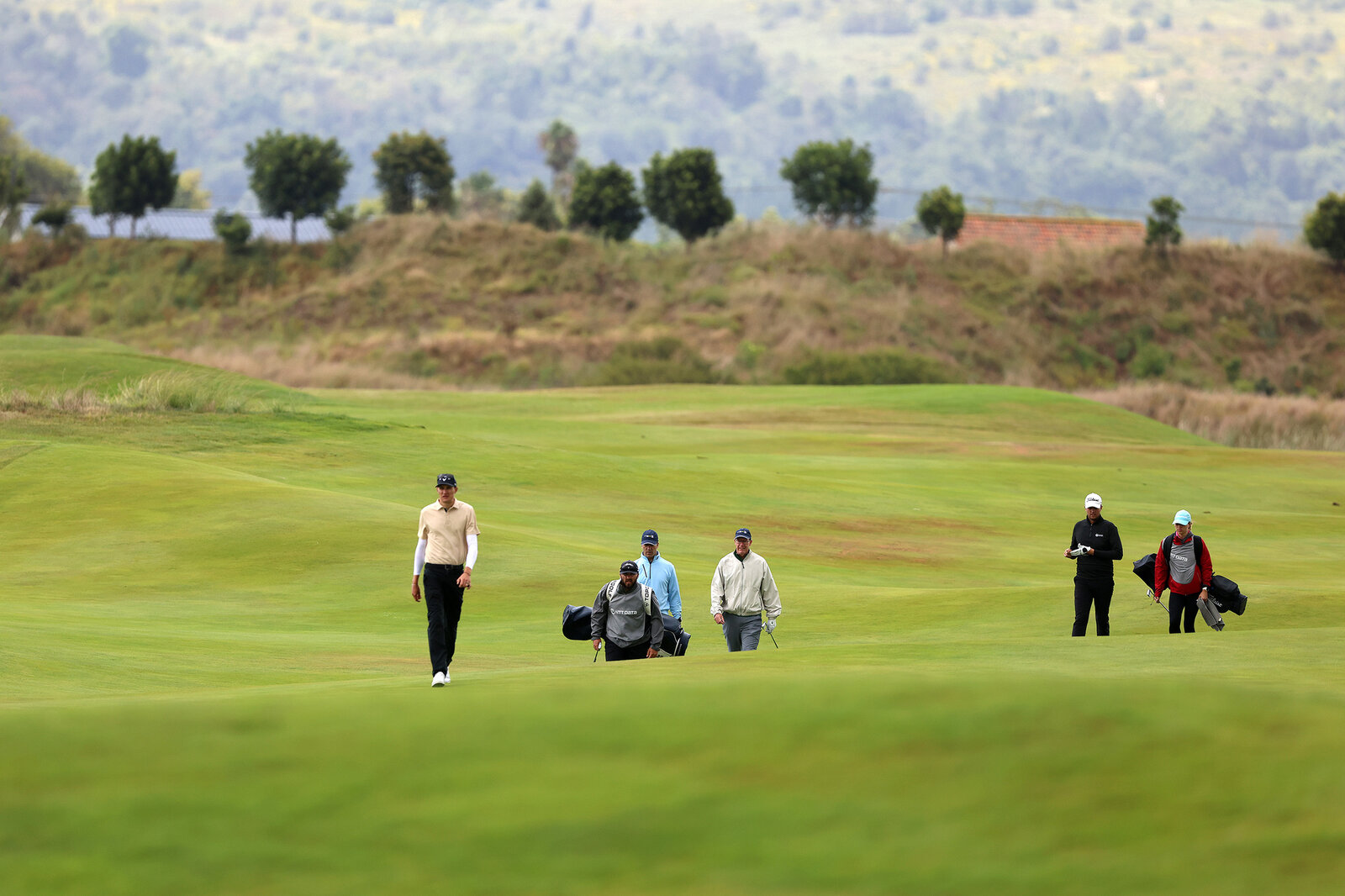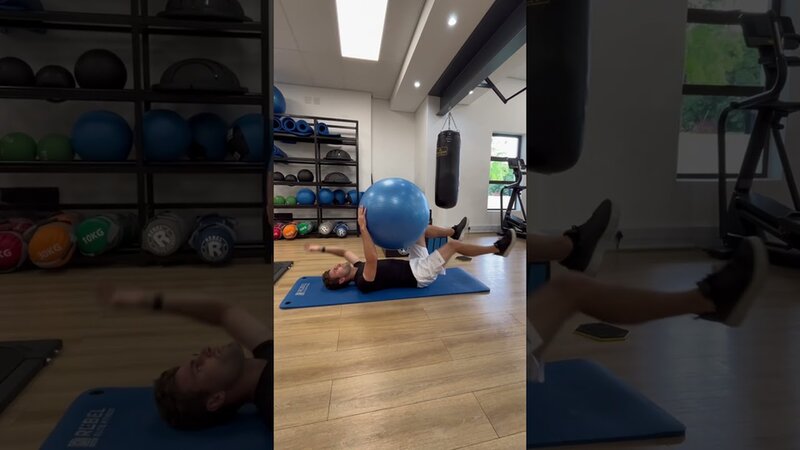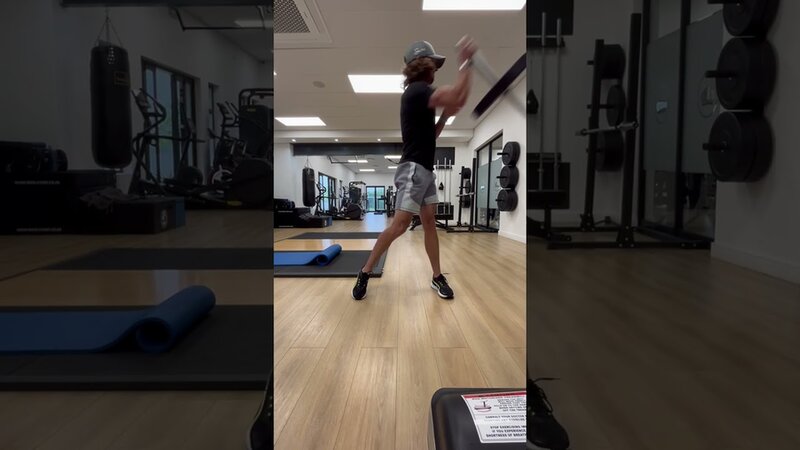The golf swing can be a very difficult movement to learn, especially if you don’t really have a history of playing ball sports. It is a movement that requires good posture, balance, rotation, strength, speed and power. We can throw accuracy into that equation too along with an element of rhythm.
These components can all be trained individually, which is a good thing to do if there is a weakness or restriction. But the challenging thing with golf is that all these elements have to be put together into a movement, and just because you have improved one element (for example, strength) does not mean your golf swing will get better.
As I mentioned, the golf swing can be a difficult movement to learn, but if you have played any kind of ball sport before, there is actually quite a bit of overlap in terms of the movements.
Golf coaches will often talk about “hitting a forehand” in the hitting of a draw in golf (right-to-left ball flight for a right-handed golfer), which makes reference to the forehand in tennis. The act of throwing a cricket ball follows a similar pattern to hitting a golf ball, where there is a windup (backswing), a planting of the front foot (weight transfer), lower-body firing followed by the torso (upper body), then the throwing arm and lastly the wrist releasing the ball (golf club).
Even kicking a football has some application to the golf swing, where you plant and pivot your body around a stationary leg, rotating and transferring power by using the ground.

DID YOU KNOW?
GolfRSA has partnered with The R&A for a year-long journey looking at the benefits of golf, with a highlighted theme each month.
read more!

DID YOU KNOW?
GolfRSA has partnered with The R&A for a year-long journey looking at the benefits of golf, with a highlighted theme each month. The campaign launched in February with the theme Golf is Good for Balance. March’s #HealthyHabit is Golf is Good for Co-ordination.
Explore the benefits of golf and why you should choose this sport as your #HealthyHabit for life. Research has shown that golf improves many physical aspects including muscular strength, power, endurance and walking performance. Golfers also benefit from green space and social interaction.
Join THE GOLF MAG and GolfRSA on social media and share how golf has been good for your health.

Now, the flip side of this coin is that playing golf can also develop elements of fitness. It can improve your cardiovascular fitness (walking on the golf course), increase strength in the lower body, improve your balance and even improve co-ordination. Studies have also shown how golf can have a positive effect golf on mental health and wellbeing too.
As a new golfer, there may be an overemphasis of the arms and hands as the main contributors to the golf swing, but over time and with some guidance from a qualified PGA professional, the golfer learns that the best way to hit the golf ball is by using the lower body, the core, the upper body and the arms and hands. When this sequence is used correctly, along with an understanding that the golf swing actually requires a transfer of weight from the trail leg to the lead leg in the downswing, we see an improvement in golfers’ co-ordination.
There are a few exercises you can do to improve your co-ordination. I have included two videos as examples, but the truth is there’s a plethora of movements you could do.
The first exercise is a dead bug variation with a Swiss ball:
- Start with your back flat on the ground, and a bit of a squeeze on the ball between the arms and knees.
- In the beginning, there is no need to drop the limbs all the way to the ground; you can just take the hand and knee off the ball slightly.
The second one is a bit more of a whole body exercise: it is a single arm landmine clean-to-push press.
- This exercise can serve a multitude of functions, but one of the main reasons I like to use it is that the sequence of movements mirrors the most efficient way to hit the golf ball.
- You can start with just the bar, and make sure you keep your back straight in the pick-up phase of the movement.
EJ LANGNER/SUNSHINE TOUR
About the author
Gavin Groves graduated with honours in biokinetics from the University of Pretoria in 2007 after completing his undergraduate degree in human movement sciences. He started at the World of Golf in 2007 as a golf fitness professional, working with beginners, elite amateurs and professionals. A year later, he started at the Titleist Performance Institute (TPI) and completed all three levels by 2012. He is also an AA-member of the PGA of South Africa. Gavin joined the University of Pretoria's High Performance golf programme in 2013, and in 2018 he moved full time to the DP World Tour, where he has worked with players including Brandon Stone, Andy Sullivan and Darren Fichardt. He also counts numerous past and present Sunshine Tour professionals as clients. In a career spanning over 16 years, Gavin has worked with over 50 South African professionals and continues to grow the fitness aspect of golf internationally and locally. He has been the full-time fitness consultant of the GolfRSA National Squad since 2017 and has worked with some of the best SA amateur golfers, including Jovan Rebula, Aldrich Potgieter and Christo Lamprecht.




@GavinGrovesGolf
@gavingrovestraining
www.newtonagency.co.za
Behind the Dream